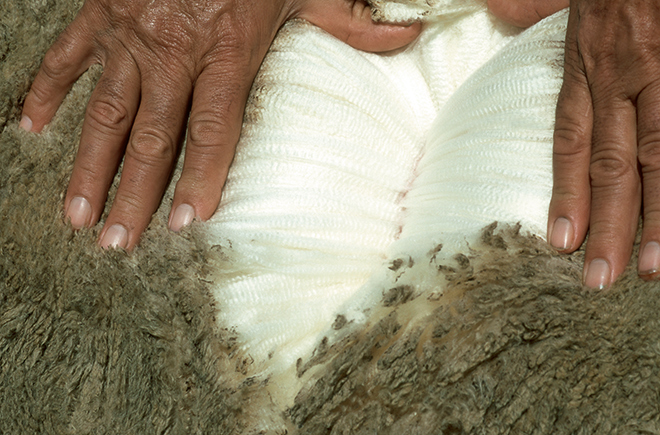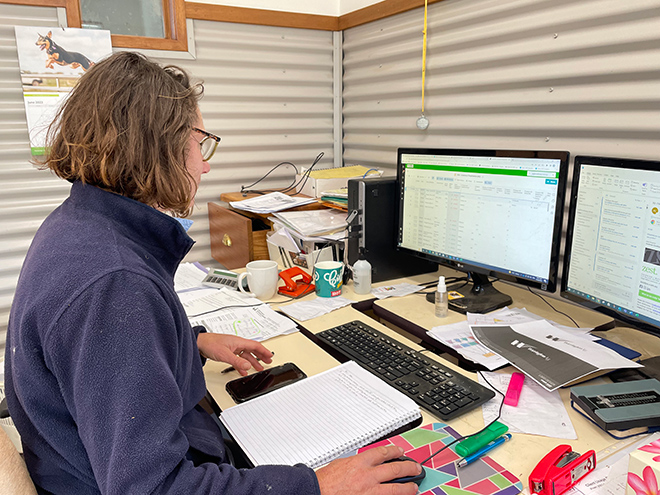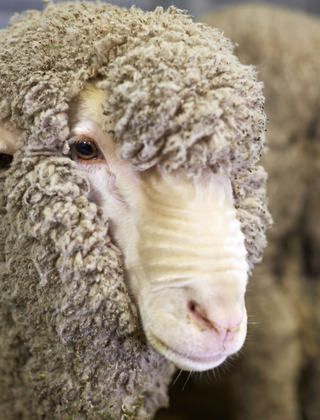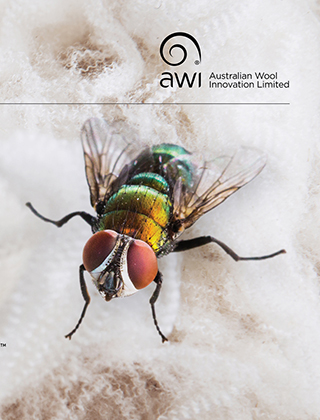Effective residue management underpins worker safety and market access

It is important that woolgrowers understand the regulatory limits of using chemical products on their sheep. Following the rules not only optimises the welfare of the sheep, it also maximises the safety of the operator, the health of the environment and the positive eco-credentials of Australian wool in the marketplace.
It is important that woolgrowers understand the regulatory limits of using chemical products on their sheep. Following the rules not only optimises the welfare of the sheep, it also maximises the safety of the operator, the health of the environment and the positive eco-credentials of Australian wool in the marketplace.
Woolgrowers rely on a range of animal health products to protect their sheep from internal and external parasites such as worms, lice and blowflies. One consequence of using chemical products is the potential presence of residues in body tissues and wool for a period after the product’s application.
For all registered veterinary products in Australia, there are in place regulatory time periods following the chemical’s application that indicate when the residue that remains in or on meat and wool products will not exceed the maximum residue limit (MRL).
The Australian Pesticides and Veterinary Medicines Authority (APVMA) sets MRLs for all registered veterinary chemicals in agricultural produce. To find out the time constraints, always read the product label or view the APVMA or ParaBoss websites (see the ‘More information’ section below).
The mandatory time constraints have been set to ensure lamb and sheep meat is safe to eat, wool and sheep are safe to handle, and wool scour effluent is safe for the environment.
What are the time constraints?
Sheep rehandling interval (SRI)
The SRI is the time between treatment and when wool or sheep can be safely handled without the need for protective clothing. If an SRI is included on a product label, this must be observed to protect those handling the sheep or wool, and to protect the environment in the case of wool processing residues. For some products, the SRI is short, only requiring the product to become dry on the sheep.
Meat withholding period (WHP)
The meat WHP is the time from chemical application to when an animal may be slaughtered for domestic consumption. Although lice control and flystrike products are applied to the skin or wool of the sheep, the skin absorbs some of the product. The specified WHPs are in place to ensure no detectable levels of these chemicals are left in muscle, fat or other body tissues.
The wool withholding period is equivalent to the wool harvest interval (WHI), see below.
Export slaughter interval (ESI)
In addition to the meat WHP, sheep producers need to be aware of the ESI. The ESI is the time from chemical application to when an animal may be slaughtered for export. Some products have a relatively long meat WHP or ESI. Take care when treating lambs to ensure this will not delay their planned sale.
A trade advice statement (such as an ESI) might not appear on labels of older registered veterinary products, however all new products now include a trade advice statement. If you cannot find the ESI on a product label, use the ParaBoss Products Search tool available on FlyBoss or LiceBoss (see ‘More information’ below).
Wool harvest interval (WHI)
The WHI (equivalent to wool withholding period) is the time from application of a chemical to when the wool can be harvested (this includes crutching) to satisfy Australian environmental requirements. Most chemicals used to treat external parasites, such as sheep lice and sheep blowflies, bind to the wool grease rather than the fibre itself. The scouring process removes wool grease and most other contaminants at the same time, which can result in contaminated scour effluent and lanolin if the WHI is not adhered to.
You can estimate the pesticide residue levels on wool at shearing caused by lice or flystrike treatments by using the ParaBoss Wool Residue Tool on www.flyboss.com.au/sheep-goats/tools/woolres-tool.php
If a lice or fly treatment does not state a WHI or an SRI, then a default one-month period applies for mob treatments or for wound dressings. Flystrike treatments for individual sheep have a default withholding period of at least one month for wool.
Best practice product application
To achieve the correct application of chemicals, woolgrowers should read product labels closely (and the material safety data sheet, if necessary) and take care with the preparation and dispensing of the product.
Equipment must be suitable and set up correctly. Ensure correct calibration of the delivery tools and apply the product to well-prepared and contained sheep. Operators must take time and care with every sheep.
To ensure the safety of the operator:
- Follow the safety direction on the label.
- Store chemicals correctly and securely.
- Wear protective gear.
- Carefully pour and mix chemicals.
- Have water, soap and towel ready to wash splashes off.
- Have clean-up equipment ready for spills.
- Wash hands before eating, drinking or smoking.
- Wash and store equipment straight after use.
- Change your clothes when you have finished chemical work.
More information:
- Find the SRI, WHP, ESI and WHI for registered parasite treatment products using the ParaBoss Products Search tool, available at flyboss.com.au/sheep-goats/treatment/products.php
- APVMA website (Pesticides and veterinary residues) https://apvma.gov.au/node/10806
- APVMA PubCRIS database search (chemical registration information) https://portal.apvma.gov.au/pubcris
CASE STUDY
Technology helping to ensure health and safety

Jo Bradley of Bradley Ag
Modern technology eases the burden of managing the handling, treatment and regulatory requirements regarding veterinary chemicals for the Bradley Ag team in the northern Midlands of Tasmania.
For Jo and Rob Bradley of Bradley Ag, the health and safety of their staff and their livestock underpin the success of their diverse mixed farming operation that includes a composite flock of 7,000 breeding ewes and lambs plus trading stock. With an annual turnover of more than 8,000 prime lambs and 22,000 kilograms of medium–broad wool, the Bradley Ag team is familiar with the potential hazards associated with handling a wide range of agricultural chemicals.
Ensuring their staff are aware of the risks and regulations associated with animal health products, such as vaccines, drenches, flystrike and lice treatments is a high priority and a key risk-management strategy within the business. In addition to managing the welfare of their staff and their livestock, rigorous policies and procedures surrounding the use and handling of these products combined with comprehensive record keeping supports the integrity of their sheep operation.
“We use Smartsheet software across the business to keep extensive agrichemical records,” Jo explained.
“Along with all our staff we have the Smartsheet application on our mobile phones, so we can record the key details at the start of each sheep handling and treatment activity.”
The types of data recorded include treatment date, mob details, product details (including batch numbers, expiry dates and all regulatory details, such as WHP, SRI and ESI).
According to Rob, the ease of entering information for every operator in the business is the best part of the system – particularly when it comes to recording product batch numbers.
“Long gone are the days of having to painstakingly enter product batch numbers,” said Rob. “Now it is as simple as taking a photo with your smartphone and attaching the file to the treatment record in the app.”
According to Jo and Rob, complying with the regulations surrounding WHP, sheep rehandling, wool harvesting and slaughter intervals is just part of running a responsible farming business. And modern technology is helping ensure their diverse range of enterprises runs smoothly.
Maintaining the reputation of Australian wool
Studies funded by AWI clearly show that the incidence of agricultural chemical residues in Australian greasy wool is very low. This is good news for the wool industry in its push to establish the fibre’s positive eco-credentials amongst environmental rating agencies, governments, the textile trade and consumers.
Since 2001, AWI has sponsored an annual survey of a wide array of agricultural chemical residues in Australian greasy wool. AWI monitors residue levels to help minimise any harmful impacts of chemicals on farm workers as well as to ensure wool is suitable for sale into markets that are increasingly concerned about the provenance of their products, including chemical residues remaining on fibres.
The studies confirm favourably low and decreasing trends in residual pesticides remaining in Australian greasy wool. Tests have been carried for chemicals including Organophosphates (OPs), Organochlorines (OCs), Synthetic Pyrethroids (SPs) and specific Insect Growth Regulators (Diflubenzuron, Triflumuron and Dicyclanil).
Residues of the older chemical groups (OP and SP) have declined toward a mean (average) of near zero. In fact, the vast majority of sale lots do have actual zero or virtually zero residual pesticide.
“The studies funded by AWI demonstrate a proactive wool industry that is continually improving its environmental and safety performance,” said AWI Program Manager, Fibre Advocacy & Eco Credentials, Angus Ireland.
“This body of work addresses any misconceptions that environmental apparel ratings agencies and the broader textile industry might have regarding toxicity in wool; these favourable results reflect careful management practices by farmers servicing the apparel wool industry, increasing confidence all along the supply chain.”
This article appeared in the September 2022 edition of AWI’s Beyond the Bale magazine. Reproduction of the article is encouraged.















